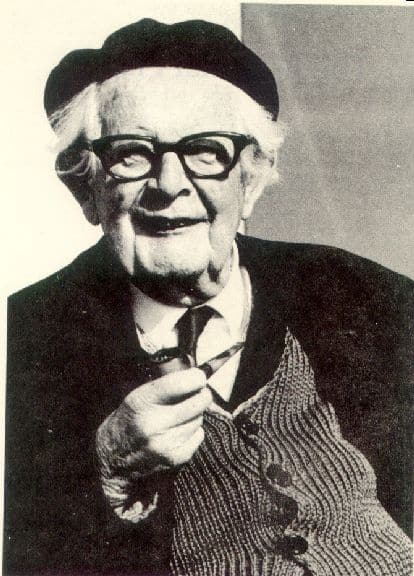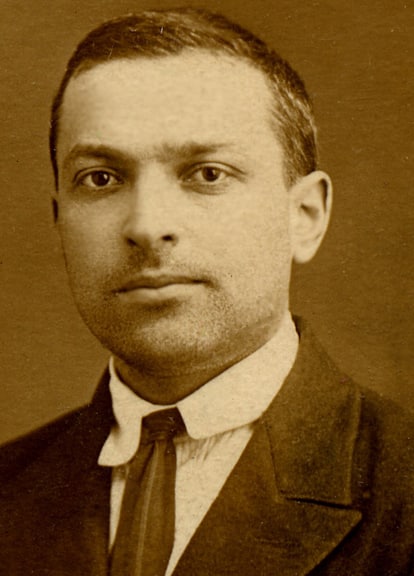This paper is going to discuss two Early Childhood Educators who are important in acknowledging the development in children. Jean Piaget and Lev Vygotsky theories are what the Constructivist Model is based on. The author has chosen to discuss Piaget and Vygotsky as we will see in this paper that these two men have very similar ideas with Piaget developing the foundation of Cognitive Development and Vygotsky expanded on Piaget’s theories and developing his own theories.
The Constructivist Model that Piaget and Vygotsky’s theories are based on is an education program that believes children are always learning. The curriculum is based on children experiencing an activity and learning from it.
Children might go on an outing to a farm and the teacher will use this outing in the classroom to teach the children about science, math and English. This type of school focuses on a child’s physical, mental, emotional and cognitive abilities.
The Constructivist model realizes that not all children learn at the same pace so the curriculum is set up so children can learn on an individual basis or in small groups depending on the cognitive level they are at. (Brewer, 2004)
Piaget was an experimenter and theorist in developmental psychology and human intelligence. Piaget developed an interest in psychology at a young age as his mother had mental health issues.
Piaget followed his interests and numerous jobs in the psychology field before settling as the Chair of Philosophy at the University where he was to teach philosophy, psychology and sociology.
Piaget got married and start having his own children. As Piaget children grew up, Piaget and his wife began to observe the reaction of their own children in different situations, which is how Piaget developed his best theories. Piaget developed theories that are now known as the foundation of what develop mentalists base their theories. This was said by http://fats.cns.muskingum.edu
Piaget developed many theories by observing and experimenting with children. Piaget believed that all children go through similar stages and that none are skipped, this he considered to be the “Piaget’s Stages of Cognitive Development”.
Piaget had four stages of cognitive development which included “The sensorimotor stage (birth-2years)” this is Piaget’s first stage and infants are relying on behavioral schemes to understand their surroundings. Within this stage Piaget said that babies develops “object permanence” which is when the child can’t see an object but still knows that the object exists; “The preoperational stage (2-7years)” the child begin to think with their imagination; “The concrete operational stage (7-11 years)” children start to think with factual logic; “The formal operational stage (11-beyond)” children can think with logic that they can or can’t see. (Inhelder, Chipman & Zwingmann, 1976)
Piaget thought that for a child to move onto the next stage they would need to develop the right amount and type of schemata’s. Schemata’s were what Piaget believed to be cognitive structures that described the environment and guided the person’s reaction.
Piaget believed there were three forms of these and they were Behavioral, Symbolic and Operational and these help a person determine their environment behaviorally, mentally and logically.
Piaget believed that there were four functions that allowed the schemata to be modified over a lifetime that are:
Organization– the child learns new and harder schemata’s;
Assimilation– child learns new information and tries to relate it to pre-existing information;
Accommodation– children process the new information with the already existing information;
Adaptation– children are exploring their environment and they are adapting this new information into their schemata’s. (Borich and Tombari).
Within all of Piaget’s observations he noticed that children learn a lot from their peers. Children act differently when engaging, arguing or sharing ideas with their peers compared to how they would act if they were with adults.
Piaget said that children would satisfy their own needs by interacting in these situations with a peer that was at the same cognitive level. This child would be learning social skills and how to share with their peers. Piaget thought that educators should focus on social and emotional issues as well as teaching mentally. (Gallagher & Easley, 1978)
Piaget was studying children in the early 1900’s and at this time he proposed that we need to look at the relationships between children and other children and children and their parents, he noticed that one side always is telling the other side what to do and the lesser side can only agree, Piaget believed that everyone should be equal in order to have respect for each other (De Lisi, 2002), nearly 100 years later we are still trying to solve bullying among children and adults.
Piaget had a lot of good ideas when describing how to teach children cognitively. First of all Piaget’s theory of Cognitive development is said to have been one of the most influential theories developed.
Piaget has uncovered the unknown for researchers to build upon today. Piaget believed in constructivism and this is still being incorporated into newer theories of infant development.
Piaget made everyone believe that to teach children we need to look at how we are teaching from a child’s point of view, he said children are curious and they need to learn from the environments they are in, by asking questions instead of being told information.
Piaget also stated that not all children are going to learn the same material at the same time and described how different children may learn at a slower or faster pace than others, he said curriculum should be taught to fit individuals or small groups based on learning ability.
Above all Piaget asked questions that researchers are still trying to find the answer to today. However Piaget did believe that all children learn the same thing around the same time universally. Vygotsky disputed this fact and said that all cultures learn different materials according to what the culture feels is important at a specific age. (Schaffer, Wood & Willoughby, 2002)
Vygotsky who graduated with a law degree became involved in psychology research years after graduating. Vygotsky continued doing research following some of the theories that Piaget developed. Vygotsky expanded on Piaget theories and in the process developed his own theories. Vygotsky died at a young age and his ideas were hidden until after the war was over. His theories were then translated from Russian.
Vygotsky developed the “Sociocultural Theory” that is the theory that all children learn from a guide who is more educated then they are. Vygotsky also developed the “Zone of Proximal Development”, he said this was the activity that children couldn’t complete on their own, they could accomplish with help from another person more cognitively advanced then themselves. (Hung & Nichani, 2002)
Vygotsky also developed a lot of good theories, that are still being used and researchers are still building on these theories. We have to wonder if Vygotsky didn’t die at such a young age what theories he might have developed. Vygotsky’s theories were of great interest to read and study, the theories that he developed should be a part of what school systems are based on today.
In comparison Piaget and Vygotsky theories were based on the same ideas but were also very different like in these examples. Piaget and Vygotsky stressed active rather than passive learning. Students in Piaget’s classroom would spend most of the day independently discovering their own activities.
In Vygotsky classrooms teachers would give students hints to the answer and eventually give less hints so that peers were helping each other figure out the answer. Piaget and Vygotsky both noticed through observation that children would talk to themselves while playing. Piaget called this “egocentric speech”.
Vygotsky expanded on Piaget’s theory and thought that children tend to talk to themselves while trying to solve a problem, Vygotsky called this “private speech” and he thought that children that did this were more organized and efficient. Vygotsky also that as children get older their “private speech” lessen from full sentences to one word and eventually all they do is move their lips.
The difference that was noticed most was that Vygotsky thought it was important for children to have a lot of interaction with adults while learning about the culture and internalizing knowledge and Piaget thought that peers were important as they promote a social aspect in a child’s life. (Shaffer, Wood and Willoughby)
In conclusion, this essay has given a brief description of Piaget and Vygotsky’s theories. This essay has proven how both Piaget and Vygotsky were important to understanding the cognitive development of children.
Piaget and Vygotsky had similar views on how children should develop but there approach in teaching the children this varied considerably.



What is the Harvard reference for this article